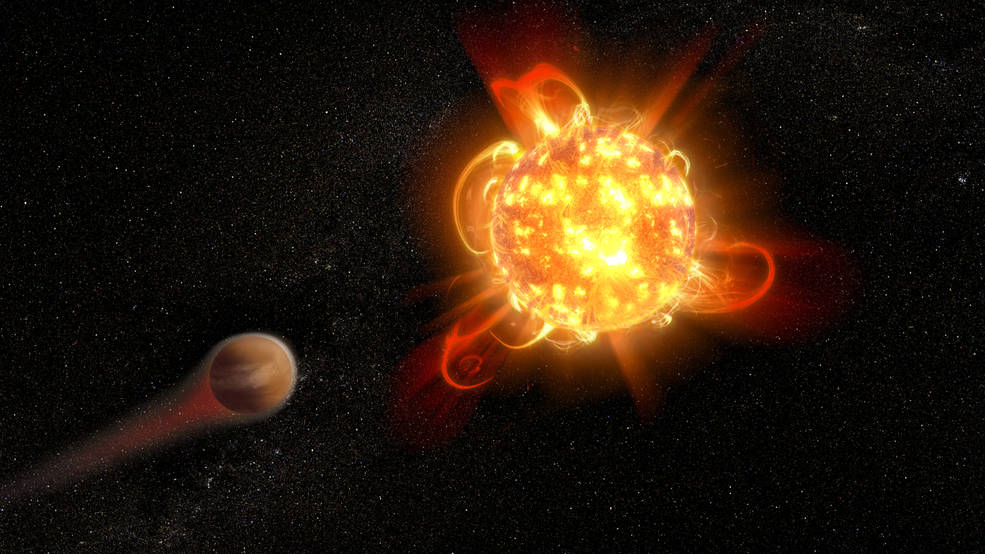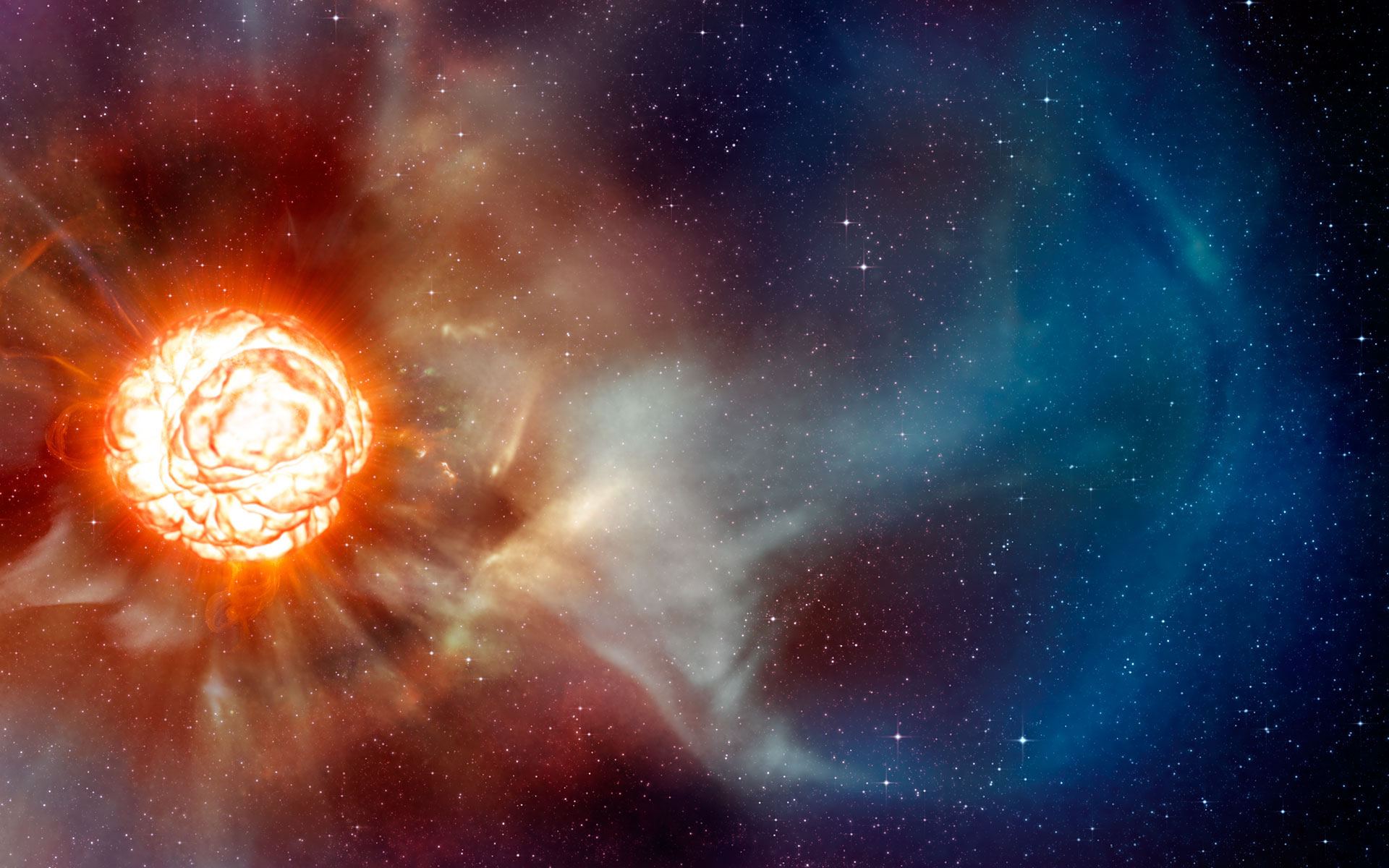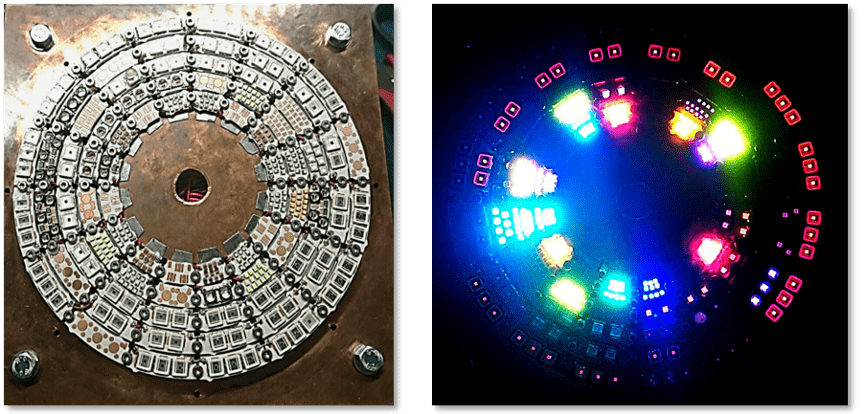In a recent study accepted to The Astrophysical Journal Letters, a team of researchers at the University of Nevada, Las Vegas (UNLV) investigated the potential for life on exoplanets orbiting M-dwarf stars, also known as red dwarfs, which are both smaller and cooler than our own Sun and is currently open for debate for their potential for life on their orbiting planetary bodies. The study examines how a lack of an asteroid belt might indicate a less likelihood for life on terrestrial worlds.
Continue reading “Another Reason Red Dwarfs Might Be Bad for Life: No Asteroid Belts”Hubble Looks at Newly Forming Stars in a Stellar Nursery

When we look at images of star birth regions, they look both placid and active at the same time. That’s nowhere more true than in a stellar nursery associated with a so-called “Herbig-Haro” object. A recent image from Hubble Space Telescope zeroed in on two called “HH 1” and “HH 2”. It looked at the turbulence associated with a nearby newborn star system.
Continue reading “Hubble Looks at Newly Forming Stars in a Stellar Nursery”A Nearby Star Has Completely Blasted Away the Atmosphere From its Planet
What if you placed an Earth-sized planet in a close orbit around an M-dwarf star? It’s more than an academic question since M dwarfs are the most numerous stars we know. A group of astronomers studying the planet GJ 1252b found an answer and it’s not pretty.
Continue reading “A Nearby Star Has Completely Blasted Away the Atmosphere From its Planet”Astronomers Think They Have a Warning Sign for When Massive Stars are About to Explode as Supernovae
Red supergiant stars are explosions waiting to happen. They are in the last stage of their life, red and swollen as they fuse heavier elements in a last effort to keep from collapsing. But eventually, gravity will win and the red supergiant core will collapse, triggering a supernova. We know it will happen, but until recently, we didn’t know when.
Continue reading “Astronomers Think They Have a Warning Sign for When Massive Stars are About to Explode as Supernovae”These Bizarre Concentric Rings in Space are Real, Not an Optical Illusion. New Data from JWST Explains What’s Happening
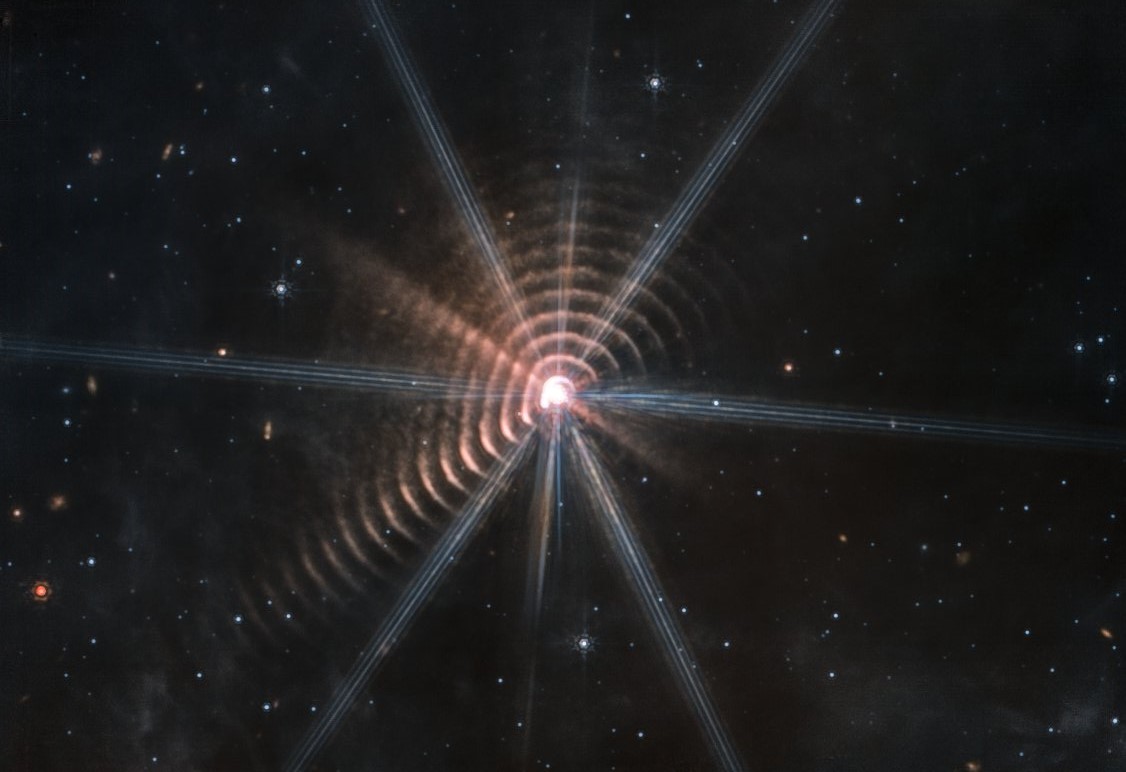
Back in August, an early release image from the James Webb Space Telescope revealed a bizarre sight: as many as 17 concentric rings encircling a binary star system, called Wolf-Rayet 140. Was it a spiral nebula, an alien megastructure or just an optical illusion?
The answer, revealed today, is dust. A new paper published in Nature Astronomy explains how stellar winds in this odd binary system blasts dust into near-perfect concentric circles every time the two stars come close to each other in their eccentric orbits.
Continue reading “These Bizarre Concentric Rings in Space are Real, Not an Optical Illusion. New Data from JWST Explains What’s Happening”Two Stars Orbiting Each Other Every 51 Minutes. This Can’t End Well
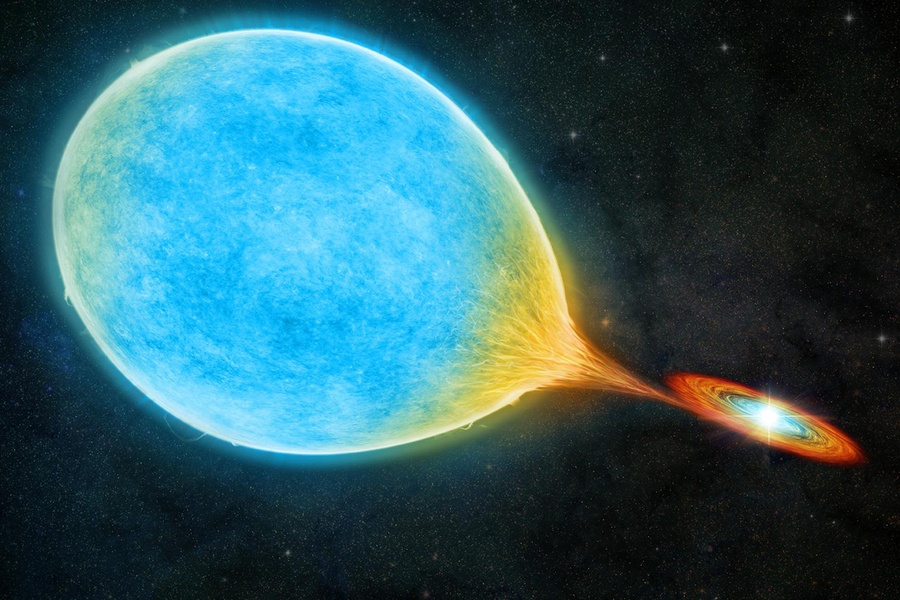
We don’t have to worry too much about our Sun. It can burn our skin, and it can emit potent doses of charged material—called Solar storms—that can damage electrical systems. But the Sun is alone up there, making things simpler and more predictable.
Other stars are locked in relationships with one another as binary pairs. A new study found a binary pair of stars that are so close to each other they orbit every 51 minutes, the shortest orbit ever seen in a binary system. Their proximity to one another spells trouble.
Continue reading “Two Stars Orbiting Each Other Every 51 Minutes. This Can’t End Well”Binary Stars Live Complicated Lives, Especially Near the End
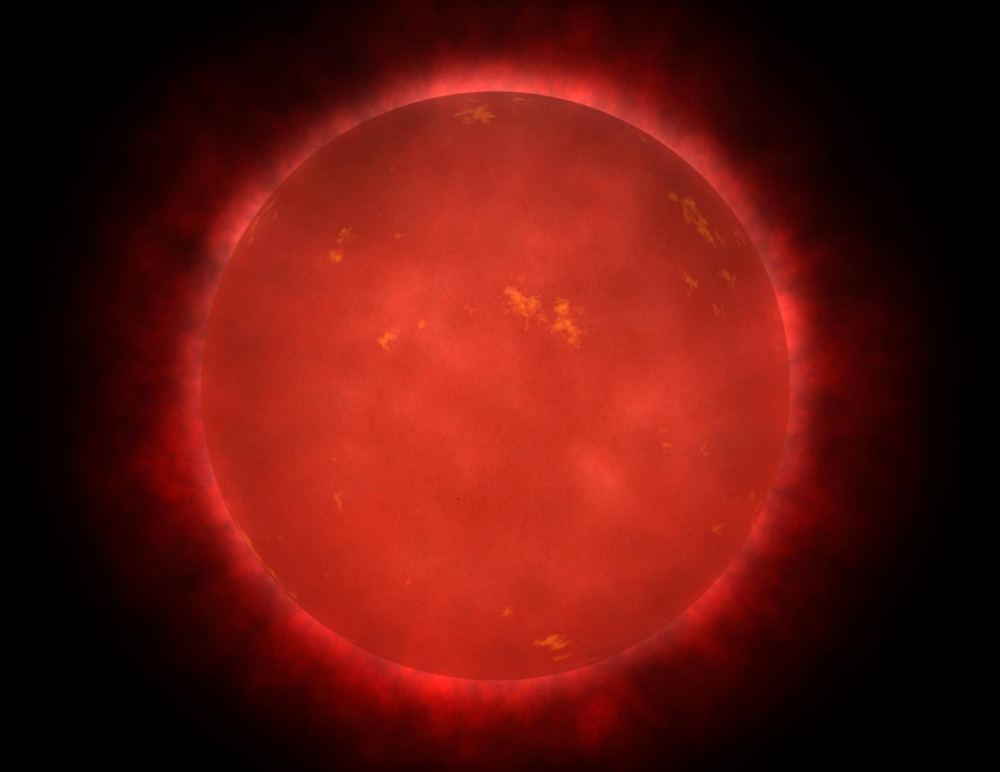
We know what will happen to our Sun.
It’ll follow the same path other stars of its ilk follow. It’ll start running out of hydrogen, swell up and cool and turn red. It’ll be a red giant, and eventually, it’ll become so voluminous that it will consume the planets closest to it and render Earth uninhabitable. Then billions of years from now, it’ll create one of those beautiful nebulae we see in Hubble images, and the remnant Sun will be a shrunken white dwarf in the center of the nebula, a much smaller vestige of the luminous body it once was.
This is the predictable life the Sun lives as a solitary star. But what happens to stars that have a solar sibling? How would its binary companion fare?
Continue reading “Binary Stars Live Complicated Lives, Especially Near the End”Astronomers see Tantalizing Evidence for one of the First Stars to Form in the Universe
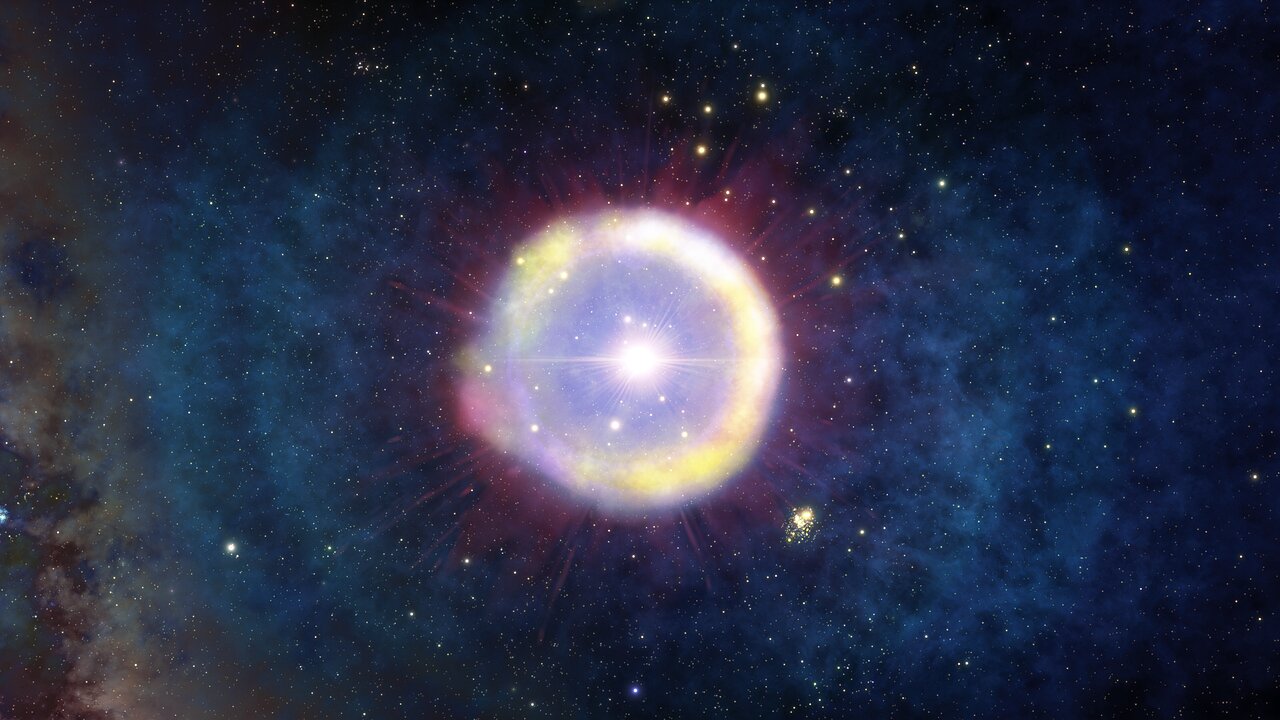
According to the predominant cosmological model, the first stars in the Universe formed roughly 100,000 years after the Big Bang. Known as Population III stars, these early stellar masses were very large, short-lived, and contained virtually no metals or heavier elements. Over time, elements like carbon, nitrogen, oxygen, and iron formed in their interiors through nucleosynthesis. When these stars reached the end of their lifespans, they exploded in a supernova many times greater than anything we see today (a “super-supernova”), causing these elements to be dispersed throughout the cosmos.
For decades, astronomers have been attempting to find evidence of these earliest stars, yet all attempts to date have failed. But thanks to a recent study, a team led by the University of Tokyo thinks they may have finally spotted the first traces of one of the earliest stars in the Universe. While analyzing data previously obtained by the Gemini North telescope of the most distant quasar ever observed, the team noticed a massive cloud of material around it. Based on their analysis, they believe the material came from a first-generation star after it went “super-supernova.”
Continue reading “Astronomers see Tantalizing Evidence for one of the First Stars to Form in the Universe”Life can Thrive Around Even the Smallest Stars
Photosynthesis is probably the most important chemical reaction for life on Earth. It is the process plants use to transform sunlight into energy it can use. Through it, plants can produce carbohydrates they can use (and we can eat when we harvest plants), generating oxygen as a by-product. Photosynthesis is why Earth’s atmosphere is about 20% oxygen. No photosynthesis, no life on Earth as we know it.
Continue reading “Life can Thrive Around Even the Smallest Stars”Just 2,000 Years Ago, Betelgeuse Was Yellow, Not Red
Compared to the lifespan of stars, human lives are pretty short. Stars such as Betelgeuse (in Orion) live for millions of years. Others exist for billions of years. We (if we’re lucky) get maybe 100 years (more or less). So, to us, stars don’t appear to change much over our lifetimes, unless they blow up as supernovae. But, what about over the course of 20 or 30 successive lifetimes?
Continue reading “Just 2,000 Years Ago, Betelgeuse Was Yellow, Not Red”
